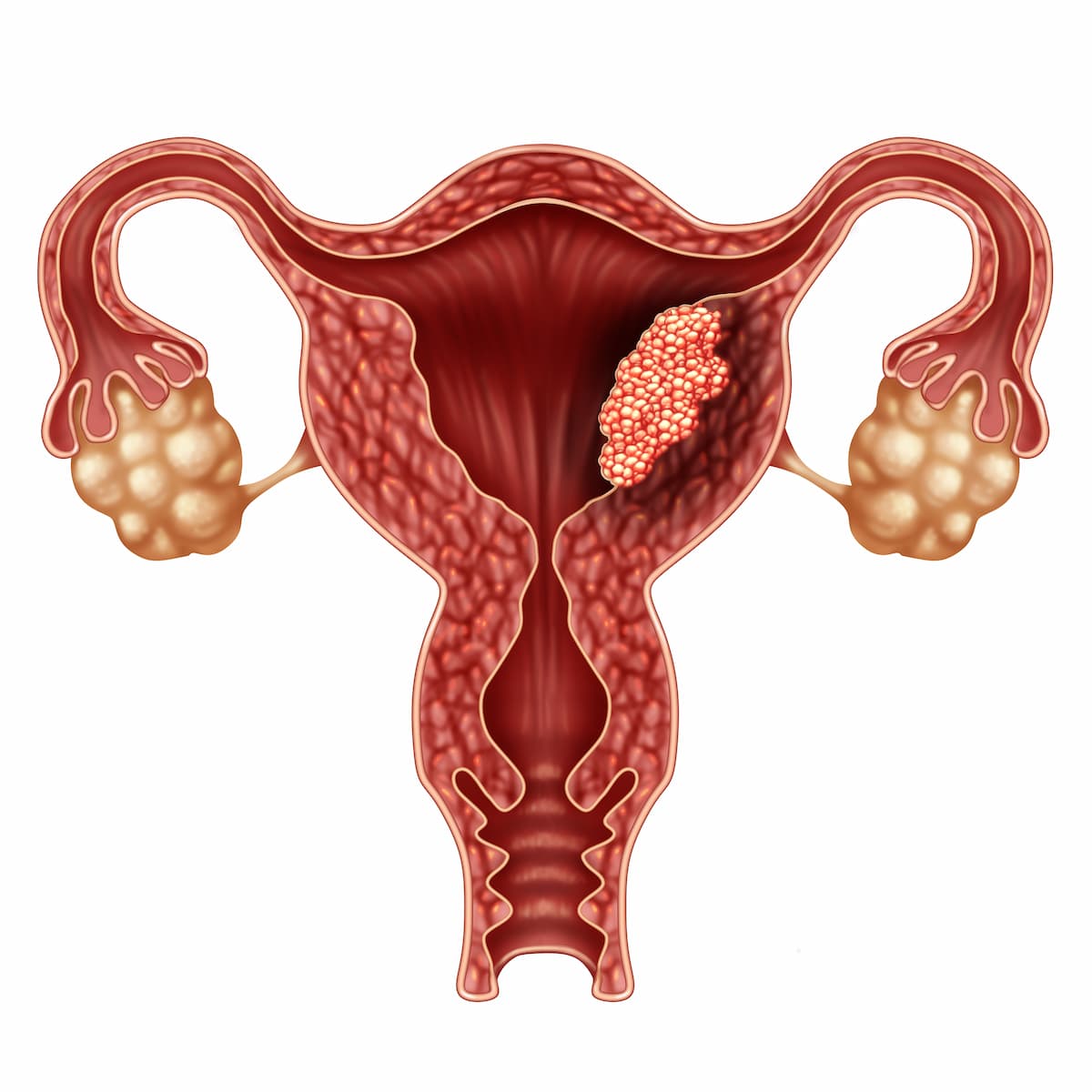DUO-E Trial Meets PFS End Point in Advanced/Recurrent Endometrial Cancer
Durvalumab plus olaparib, durvalumab monotherapy, or chemotherapy plus durvalumab saw an improvement in progression-free survival for patients with newly diagnosed advanced or recurrent endometrial cancer.
“At the 18-month landmark, we saw a doubling in the proportion of patients who were progression-free at this standpoint compared with the control [group]. [We also saw] a beautiful flattening of the curves indicating prolonged benefit,” according to Shannon N. Westin, MD, MPH, FACOG.

A statistically significant and clinically meaningful improvement in progression-free survival (PFS) was observed when chemotherapy was added to durvalumab (Imfinzi), durvalumab monotherapy, or durvalumab plus olaparib (Lynparza) for patients with newly diagnosed advanced or recurrent endometrial cancer, according to results from the phase 3 DUO-E/GOG-3041/ENGOT-EN10 trial (NCT04269200) presented at the 2023 Annual Global Meeting of the International Gynecologic Cancer Society (IGCS).
The median PFS in the chemotherapy or control arm was 9.6 months (95% CI, 9.0-9.9), vs 10.2 months (95% CI, 9.7-14.7) in the durvalumab monotherapy arm, vs 15.1 months (95% CI, 12.6-20.7) in the combination arm. At 12 months, the PFS rates were 61.5%, 48.5%, and 41.1%, and at 18 months, they were 46.3%, 37.8%, and 21.7% in the combination, monotherapy, and control arms, respectively.
The first interim analysis of overall survival (OS) at 27.7% maturity did not meet statistical significance. There was a flattening of the curve and a proposed benefit for OS.
“At the 18-month landmark, we saw a doubling in the proportion of patients who were progression-free at this standpoint compared with the control [group]. [We also saw] a beautiful flattening of the curves indicating prolonged benefit,” said Shannon N. Westin, MD, MPH, FACOG, professor in the Department of Gynecologic Oncology and Reproductive Medicine in the Division of Surgery at The University of Texas MD Anderson Cancer Center, during the presentation.
A total of 718 patients were randomly assigned 1:1:1 and stratified by mismatch repair (MMR) status, disease status, and geographic region. In the monotherapy and control arms, durvalumab was given at 1120 mg intravenously every 3 weeks. After 6 cycles of chemotherapy and no evidence of progressive disease, patients could transition to the maintenance phase. Durvalumab was given at 1500 mg intravenously every 4 weeks, and olaparib was given at 300 mg tablet twice a day.
The dual primary end points were PFS via RECIST by investigator for durvalumab vs control and the combination vs control. Key secondary end points were OS and safety. Patients were enrolled if they had newly diagnosed FIGO 2009 stage III/IV or recurrent endometrial cancer, MMR status, naïve to first-line systemic anticancer treatment, or naïve to PARP inhibitors and immune-related therapy.
The subgroup analysis of PFS by MMR status was conducted. Patients with deficient MMR (dMMR) status had a median PFS of 7.0 months (95% CI, 6.7-14.8) in the control arm, not reached (NR; 95% CI, NR-NR) in the monotherapy arm, and 31.8 months (95% CI, 12.4-NR) in the combination arm. The PFS rates at 12 months were 70.0%, 67.9%, and 43.3%, and at 18 months they were 62.7%, 67.9%, and 31.7% in the control, monotherapy, and combination arms, respectively.
In the proficient MMR (pMMR) population, the median PFS in the control group was 9.7 months (95% CI, 9.2-10.1), 9.9 months (95% CI, 9.4-12.5) in the monotherapy arm, and 15.0 months (95% CI, 12.4-18.0) in the combination arm. The PFS rates at 12 months were 59.4%, 44.4%, and 40.8%, and at 18 months they were 42.0%, 31.3%, and 20.0% in the control, monotherapy, and combination arms, respectively.
For patients who were PD-L1 positive with a tumor area positivity (TAP) of 1% or more, the median PFS in the control arm was 9.5 months (95% CI, 7.9-9.9), 11.3 months (95% CI, 9.7-15.4) in the monotherapy arm, and 20.8 months (95% CI, 15.1-NR) in the combination arm. The 12-month PFS rates were 67.3%, 48.8%, and 38.6% compared with the 18-month rates of 54.8%, 40.2%, and 21.5% in the control, monotherapy, and combination arms, respectively.
For those who were PD-L1 negative with a TAP of less than 1%, the median PFS was 9.9 months (95% CI, 7.6-12.5) in the control arm, 9.7 months (95% CI, 7.0-14.7) in the monotherapy arm and 10.1 months (95% CI, 9.5-15.0) in the combination arm. At 12 months, the PFS rates were 49.9%, 44.9%, and 46.6%, and at 18 months they were 30.4%, 31.1%, and 22.7% in the control, monotherapy, and combination arms, respectively.
The most common any-grade adverse effects (AEs) across the control, monotherapy, and combination arms, respectively were anemia (54.2%, 47.7%, and 61.8%), alopecia (50.0%, 50.2%, and 61.8%), nausea (44.5%, 40.9%, and 54.6%), and fatigue and asthenia (44.5%, 40.9%, and 54.6%). Grade 3 or higher AEs included neutropenia (23.3%, 21.7%, and 26.9%), and anemia (14.4%, 15.7%, and 23.5%).
AEs of special interest included pure red cell aplasia (0.0%, 0.0%, and 1.3%), autoimmune hemolytic anemia (0.0%, 0.4%, and 0.8%), and any immune-mediated AEs (6.8%, 28.1%, and 23.5%) in the control, monotherapy, and combination arms, respectively.
Reference
Westin SN, Moore KN, Chon HS, et al. DUO-E/GOG-3041/ENGOT-EN10 trial: carboplatin/paclitaxel + durvalumab followed by maintenance ± olaparib as first-line treatment for newly diagnosed advanced or recurrent endometrial cancer. Presented at the 2023 Annual Global Meeting of the International Gynecologic Cancer Society; November 5-7, 2023, Seoul, South Korea. Plenary 02.